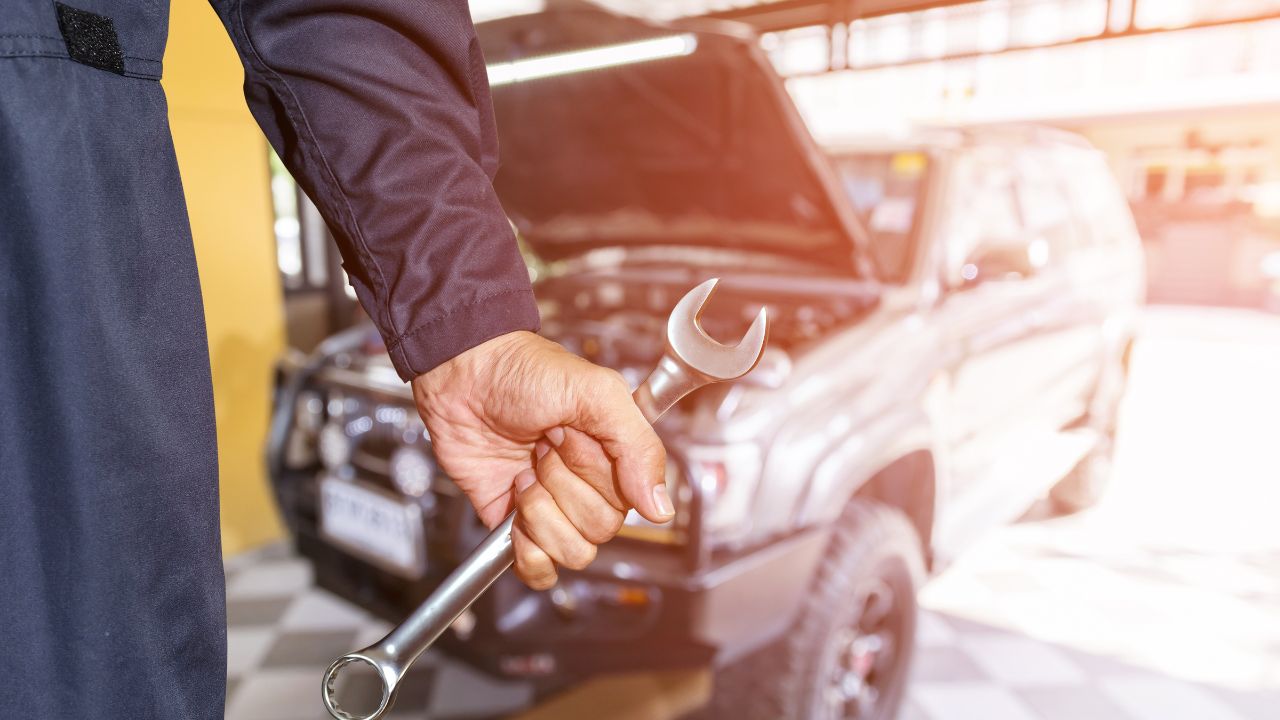
There are ten schools of automotive mechanics in South Carolina. They also have many locations. It's easy to find one near you. Many schools offer multiple certificates and degrees. There are scholarships and grants available to help with the costs of school. You can also earn a high-paying job while you're studying. These are some tips to help you consider enrolling at an auto mechanic school. Below, we have listed a few choices.
Wake Tech
Raleigh, North Carolina has a brand new automotive facility. Recently, a new degree in collision repair was added. The college offers certificates and diplomas in many areas to meet the growing demand for collision repair technicians. The school's current collision repair program only has 10 students. But, by June, 16 more will be enrolled. This expansion will allow the school to reach its full enrollment goal which is 80 students.

Start the application process by filling an online form. You will need to attach transcripts from high school and college. Include the major code and your advisor's name. Once you have submitted the application you must pay the DMV in cash or by mail. The DMV offers many options when applying online and has a payment schedule to fit your schedule. You can also make online payments to save money and time.
Wake Tech Auto mechanic school in South Carolina puts students in a great position for a successful career in the automotive industry. The school is situated on the way to employment. The new Hendrick Center for Automotive Excellence has been opened by the school. It will triple the number students enrolled in the collision repair and automotive system technology programs. The new facility houses a laboratory measuring 7,000 square feet for students who are interested in learning about collision repair and shop operations.
Midlands Technical College
If you are looking for an auto mechanic school in South Carolina, you should consider Midlands Technical College. This public technical college can be found in many locations throughout South Carolina. With approximately 16,000 student, it is the state’s largest two year college. While students are expected complete their courses within three year, there are not specific graduation requirements. Midlands not only offers an assortment of automotive programs but also has an online learning program that allows students the opportunity to earn their diplomas or certificates online.
Midlands Technical College's AutoMechanics program prepares students to work in many different settings, such as special shop technicians, department-store service mechanics, and emissions inspectors. They are also certified to repair vehicles including cars, trucks and motorcycles. They can also find jobs in dealerships and specialty shops as well as emissions inspection stations after completing their program. Students will learn how to apply technical skills to various automotive systems such as engine repair, suspension and steering, heating and air conditioning, and even heating and cooling.

While you do not need a license in South Carolina to be an auto mechanic, ASE certification can increase your job prospects and pay. There are many levels of training available at South Carolina's auto mechanic schools, from associate degrees to certificate programs. Central Carolina offers a certificate for automotive technology. Midlands has an associate degree in automotive technologies that takes 84 credit hours. The program is accredited by the NATEF, which ensures quality education and a competitive salary.
FAQ
What's the difference between a mechanic and an automotive technician?
The two are similar but not identical. Both a mechanic and an automotive technician can repair cars.
A mechanic must be skilled in manual dexterity and able to complete simple tasks quickly. A mechanic should also be able accurately diagnose and repair problems.
An automotive technician needs to be more technically skilled than a mechanic. They must be able and able to read blueprints as well as use tools like drills or wrenches.
They must also be able to carry out complex procedures safely. They must also be familiar with different types of engines and electrical systems.
They must also be able comprehend how the various parts interrelate with one another.
A mechanic typically earns less than an automotive technician. Both jobs offer many possibilities.
What is the length of an apprenticeship as an automotive mechanic?
It takes three years to complete an apprenticeship as an automotive mechanic. This includes two years in school and two as an apprentice. The first year is used to learn all aspects of the trade including safety procedures and theory. You'll also learn the safe and efficient use of tools during this first year. After you have completed the first year of training, you will be able to spend an additional year on-the job learning different trades. You will have the opportunity for formal training during these years.
The final year of the program is spent gaining qualifications and becoming certified in the field. These include NVQs (National Vocational Qualifications), which are awarded after passing exams covering specific topics within the industry. You can also get HNCs (Higher National Certificates), that cover subjects such as customer service, business administration, management, and business administration. Finally, there are City & Guilds certificates that are offered for those who wish to become qualified in certain trades.
To work as an automotive mechanic, do I need a degree? What about part-time study?
A degree isn't necessary, but it certainly helps. Employers prefer candidates who have completed a full degree. It shows that you've put the effort in and have done everything possible to succeed.
However, it doesn't mean you can't still work while studying. Some universities let students complete their coursework in the summer and then continue their studies during the school year. Others let students take classes part-time throughout the year.
What qualifications do you need to be a truck-mechanic?
You don't have formal qualifications for this role, but you are very experienced working on trucks and engines. Your knowledge is valuable as you are able to quickly diagnose problems and work efficiently.
A solid understanding of diesel technology is also a plus. This will help you understand the components that are needed to fix our vehicles.
Is it worth being a mechanic.
The answer to this question will depend on your goals for life. If you are looking for financial gain, then yes. However, if purpose and meaning are what you seek, then no.
If you don’t have any mechanical skills, it’s pointless to get into it. It will just waste your time. You won't become rich from it. It will not make you famous. It is unlikely that your life will change.
This would require you to spend many years learning how to properly do everything. Also, you would need to hire someone else to fix it if it broke down. That's why most people don't bother doing it at all. They find something more worthwhile.
Summarising, if your goal is to make lots of money, go for it. You can't live a meaningful existence if your goal is to make a living in the mechanic's business.
How long does it take you to become a great mechanic?
A mechanic is only an expert if they have years of experience. It is best to learn how to fix cars under the supervision and guidance of a professional mechanic.
You will be required to spend time at a car garage learning as much as you can about cars. Mechanical engineering books will be required to learn about mechanics and design.
Furthermore, you'll need to enroll in auto school.
The most important thing to do is start early. To learn about automotive technology, don't wait to be older. Start studying automotive technology now to become a mechanic.
Statistics
- Apprentice mechanics earn significantly less hourly than mechanics who have completed training, with a median wage of approximately $14.50 an hour, according to PayScale. (jobhero.com)
- According to the BLS, total auto technician employment is expected to exceed 705,000 by 2030. (uti.edu)
- 52% of Mechanics in the United States think their salaries are enough for the cost of living in their area. (indeed.com)
External Links
How To
How to correctly diagnose your vehicle for repairs
You should first examine the symptoms your car is showing to determine if it requires repairs. Next, you can follow these steps in order to diagnose your car.
-
Check engine lights. Inspect the dashboard light indicators. These include the engine lights, the oil pressure gauge and the battery light indicators. The RPM gauge and coolant temperature gauge should also be checked. You may have a problem with your vehicle if any of the indicators are flashing for more than a few days.
-
Pay attention to the treads on your tires. Tires with worn treads could cause problems when handling or braking. It is also important to inspect the wheel treads. They should be clean, and they should be smooth. It is best to take off the wheels and remove them. Use a flashlight to see how well the treads are worn.
-
Monitor the level and consistency of your brake fluid. You should always keep track of the amount of brake fluid in your vehicle. This ensures that your brakes work properly. Low brake fluid levels can cause brake failure when you apply pressure.
-
Test the suspension system. A suspension system is designed to absorb vibrations and shocks. It gives you better control and allows for smoother accelerations and decelerations. A suspension problem can cause your vehicle to feel wobbly and shake uncontrollably. To determine whether your vehicle may have a suspension issue, you can try to put weight on the rear or front axle and watch the movement.
-
Examine the steering column. The steering column connects the steering wheel to all other components of the vehicle. The steering column can often be damaged by an accident. You should replace your steering column if it feels loose or unstable.
-
Pay attention to the exhaust pipe. The exhaust pipe helps move gases from a combustion chamber into the atmosphere. If the exhaust pipe is damaged or leaks, harmful fumes can enter your cabin. It is also important to repair any bends in your tailpipe immediately.
-
Check under the hood. Take a look underneath the hood to find any strange or unusual items. Your engine could be leaking fluids. You should also contact a professional technician if there is an unusual odor coming from the engine compartment.
-
The air filter should be checked. The vehicle's outside environment may cause the air filter to collect dust and debris. Your vehicle will run less well if it has a dirty filter. Replace your air filter regularly.
-
Check the fan belt. The fan belt that connects your vehicle to the transmission is called the engine fan belt. If the fan belt is damaged, the engine won’t turn. The process of replacing the belt is straightforward. All you need to replace the belt is a screwdriver with pliers.
-
You should inspect the radiator and hoses. The radiator hose carries water from the radiator to the engine. It can crack or become damaged and leak hot liquid onto an engine. To repair the hose, you will only need to use a pair needle-nosepliers and a wire brush.
-
The windshield wipers should be checked. Windshield wipers use electricity to wipe away rain and snow. If they stop functioning, they can leave streaks in your window glass. To fix the problem, simply change the washer fluid.
-
The battery cables should be checked. The battery cables provide power for the electrical systems in your car. Make sure you disconnect the negative cable before replacing batteries. Failure to do so can damage your alternator.
-
Be sure to check your headlights. Headlights illuminate the road ahead of you. It can lead to poor visibility if they aren't working properly. Inspect the bulbs for signs of burnt out.
-
Check the lights. When you approach them at night, the lights warn other drivers. You could be distracted and cause an accident if one does not work.
-
Inspect your brakes. Before you have a collision, brakes slow down your car. You may lose control of your vehicle and crash if the brakes don't function properly.
-
Change the oil. The oilkeeps your engine lubricated. It helps prevent metal parts from wearing out too quickly. It is recommended to change the oil once a month.